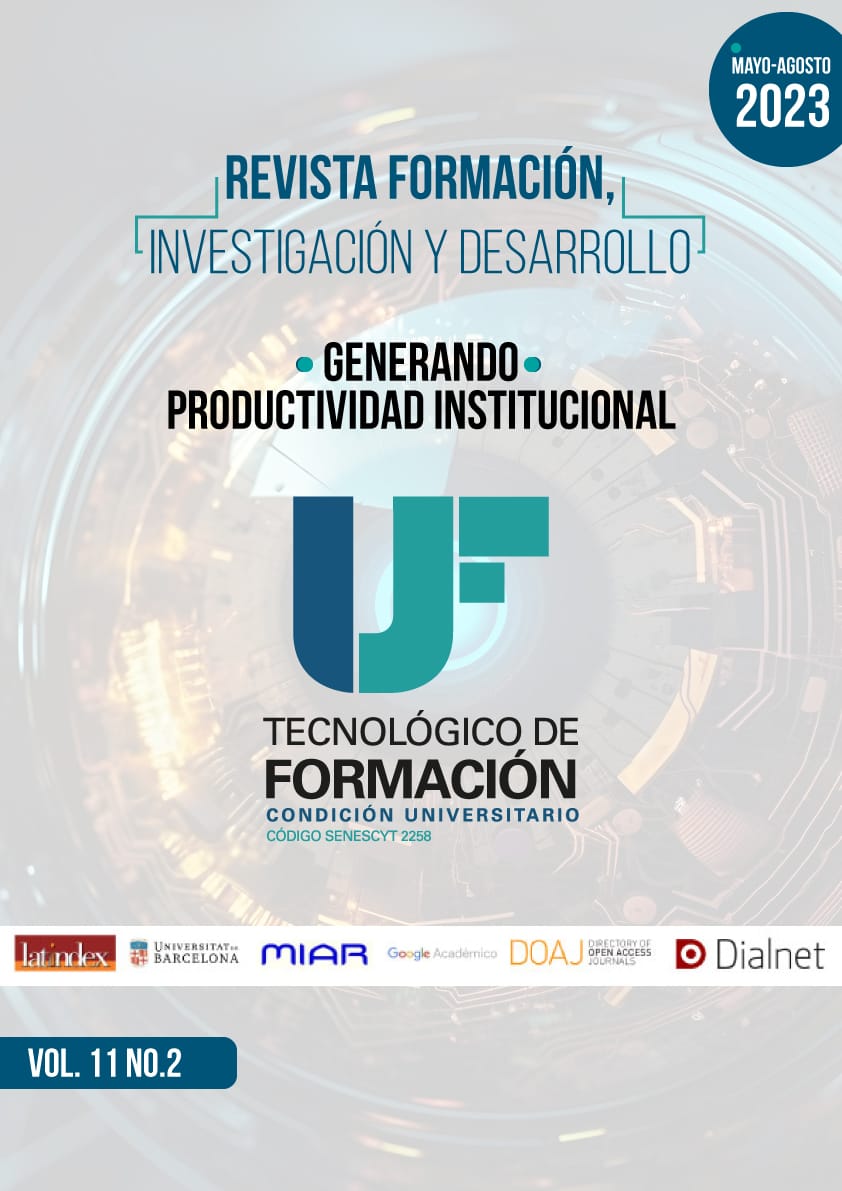International trade post COVID: analysis of Ecuador's foreign trade
Main Article Content
Abstract
The COVID-19 pandemic unfavorably deepened the international trade situation worldwide, which had
already been affected since the US financial crisis in 2009 and which, starting in 2018, the trade war
between China and the US had contributed to establishing a panorama of low growth, mainly in
merchandise trade with respect to trade in services, which due to its forms of access had favorable
growth. The situation of our country at the end of 2019 was not the best, an economy affected by bad
governments, corruption and the impact on the price of the main income generator for our country, such
as oil, resulted in unemployment, more recession, etc. COVID was the trigger that exacerbated the
crisis that international trade suffered later and all the efforts not only in terms of health and control that
have been made, of the efforts of international organizations such as the WTO, regional organizations
such as ECLAC, ALADI, The CAN has not yet been able to reach the levels of commercial exchange
that it had before the virus appeared. This work aims to take a retrospective look at world trade in the
pandemic, its impact, the measures that have been implemented and at the level of our country. The
outlook for our main export sectors, possible contingencies that help increase the volume of exports
and be able to take advantage of the opportunities that, even in this unfavorable situation, we can create
as a country.
Article Details

This work is licensed under a Creative Commons Attribution-NonCommercial-ShareAlike 4.0 International License.
Este trabajo tiene licencia DE Atribución/Reconocimiento-NoComercial-CompartirIgual 4.0 Internacional. CC BY-NC-SA 4.0.
How to Cite
References
Arciniega, A. G. (2021). Panorama actual del bitcóin. Una descripción práctica y jurídica de las criptomonedas en Colombia y Ecuador. Revista de Derecho. 36, 72-76. doi:https://revistas.uasb.edu.ec/index.php/foro/article/view/2800/2597#citations
Banco Mundial. (2019). Banco Mundial. doi:https://www.bancomundial.org/es/news/pressrelease/2019/06/04/global-growth-to-weaken-to-26-in-2019-substantial-risks-seen
BID, Integracion y Comercio. (2020). Mas alla de las fronteras. DOI:https://blogs.iadb.org/integracion-comercio/es/coronavirus-comercio-integracion/
Fondo Monetario Internacional. (2022). FMI. DOI:https://www.imf.org/es/Publications/WEO/Issues/2022/04/19/world-economic-outlookapril-2022
Forero, T. (2019, 8 17). ROCKCONTENT. doi:https://rockcontent.com/es/blog/historia-delinternet/
González, A. (2020,). IICA. doi:https://repositorio.iica.int/bitstream/handle/11324/11312/BVE20087946e.pdf?sequence=1
&isAllowed=y
Instituto Ecuatoriano de Seguridad Social. (2003). Decreto Ejecutivo 2393. Reglamento de seguridad y salud de los trabajadores y mejoramiento del medio ambiente de trabajo. Quito, Pichincha, Ecuador.
Instituto Ecuatoriano de Seguridad Social. (s.f.). Decisión 548, Instrumento Andino de Seguridad y Salud en el Trabajo. Instituto Ecuatoriano de Seguridad Social.
Ministerio de la Produccion, Comercio, Inversiones y Pesca. (2019). Ministerio de la Produccion, Comercio, Inversiones y Pesca. doi:https://www.produccion.gob.ec/wpcontent/uploads/2020/07/Informe-de-Gestion-MPCEIP-2019.pdf.
Morán, D., & Lozano, C. (2017). El ascenso de China como socio estratégico del Ecuador. Yura: Relaciones Internacionales, 94 - 114
OMC. (2018). OMC. doi:https://www.wto.org/spanish/res_s/booksp_s/blockchainrev18_s.pdf
OMC Organización Mundial de Comercio. (2021). OMC Organización Mundial de Comercio.doi:https://www.wto.org/spanish/res_s/statis_s/wts2021_s/wts2021_s.pdf
Pontificia Universidad Católica de Chile. (2021). Pontificia Universidad Católica de Chile. doi:https://observatorio.medicina.uc.cl/epidemia-pandemia-o-endemia/
Quevedo, M., Vásquez, L., Quevedo, J., & Pinzón, L. (2020). COVID-19 y sus efectos en el comercio internacional. Caso Ecuador. Dominio de las Ciencias, 6(3), 1006-1015.
Registro Oficial No 180 . (2017). Código Orgánico Integral Penal. Quito, Pichincha, Ecuador.
Registro Oficial No 339. (2020). Tercer Suplemento . Quito, Pichincha, Ecuador: Registro Oficial Organo de la Republica del Ecuador .
Saavedra, J. (2020). El covid-19 en américa latina situación y desafíos del sistema internacional. Cuaderno de Derecho Público, 8, 51-59
Tello, J. M. (2019, 06 14). RUA. (U. d. Alicante, Ed.) doi:https://rua.ua.es/dspace/bitstream/10045/95528/1/tesis_julio_mendoza.pdf
Ulloa, N., Fajardo, V., González, M., & Solórzano, S. (2021). Estrategias post COVID-19: Desafíos para las empresas exportadoras de productos tradicionales. INNOVA, 6(2), 180- 195
UNCTAD. (2011). Conferencia de las Naciones Unidas sobre Comercio y Desarrollo. doi:https://vi.unctad.org/resources-mainmenu-64/digitallibrary?task=dl_doc&doc_name=746_las_tic_como
Valencia Marín, F. D. (2021). Panorama actual del bitcóin. Una descripción práctica y jurídica de las criptomonedas en Colombia y Ecuador. Foro - Revista De Derecho, 36, 49–71. https://doi.org/10.32719/26312484.2021.36.3.

